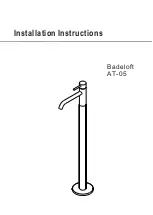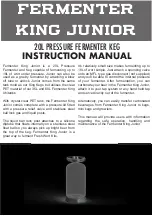
Chapter 3
Signal Connections
3-16
ni.com
Real-Time System Integration Bus
TIO devices
u
se the National Instr
u
ments Real-Time System Integration
(RTSI) b
u
s to easily synchronize several meas
u
rement f
u
nctions to a
common trigger or timing event. In a PCI system, the RTSI b
u
s consists of
the RTSI b
u
s interface and a ribbon cable. The b
u
s can ro
u
te timing and
trigger signals between several f
u
nctions on as many as five DAQ devices
in the comp
u
ter. In a PXI system, the RTSI b
u
s consists of the RTSI b
u
s
interface and the PXI trigger signals on the PXI backplane. This b
u
s can
ro
u
te timing and trigger signals between several f
u
nctions on as many as
seven DAQ devices in the system. For a RTSI connector pino
u
t, go to
ni.com/info
and enter
rt
s
ipin
.
RTSI Triggers
TIO devices req
u
ire a freq
u
ency timebase for its operation. This freq
u
ency
timebase m
u
st come from the onboard crystal oscillator and is req
u
ired
even if the device is receiving a MasterTimebase signal from the RTSI
trigger b
u
s. Any TIO device can drive its 20MHzTimebase signal onto the
RTSI Trigger 7 pin. Altho
u
gh some TIO devices have a 80MHzTimebase
(s
u
ch as the NI 6602), the RTSI b
u
s cannot carry the 80MHzTimebase
signal for bandwidth reasons. By defa
u
lt, TIO devices do not drive the
RTSI Trigger 7 b
u
s clock line.
Fig
u
re 3-8 shows the RTSI signal connection scheme for PCI TIO devices.
Figure 3-8.
RTSI Signal Connection Scheme for PCI
Trigger <0..6>
Ctr
n
Source
Ctr
n
Gate
Ctr
n
Aux
Ctr
n
InternalOutput
20 MHz Timebase
Master Timebase
RTSI Trigger 7
R
TSI Bus Connector
R
TSI Switch
R
TSI Switch
















































